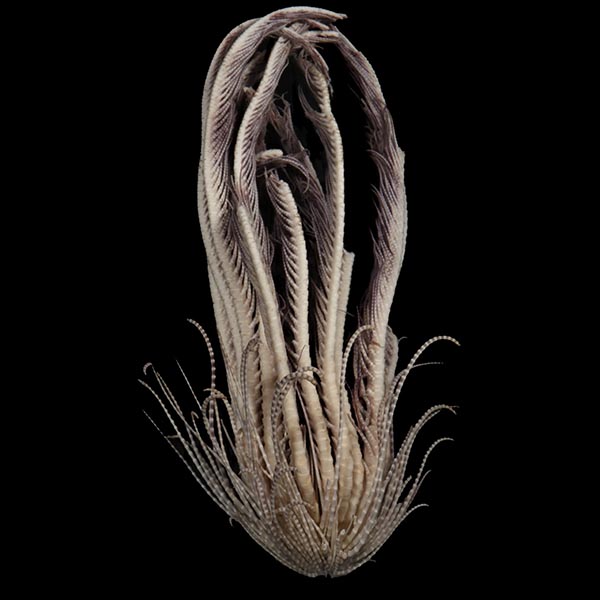
A new species of comatulid crinoid – better known as feather stars – dubbed the Antarctic strawberry feather star, has been described by scientists after an analysis of samples collected during Antarctic expeditions between 2007 and 2018
The newly-discovered creature, identified by researchers from the University of Western Australia and the University of Alabama, is one of four species that had previously been classed under a single taxonomic name.
Comatulid crinoids are echinoderms – relatives of starfish and sea urchins – and will be familiar to most divers as feathery-like animals that often appear to be fixed to coral reefs. They are motile creatures, however, sometimes crawling along the reef and sea floor using their arms, but are also capable of free-swimming when necessary.
More Antarctic stories
Antarctic feather stars were previously considered to be a single species, identified as Promachocrinus kerguelensis, however, the scientists found that differences in colour, shape and DNA data distinguished the animal into four distinct species.
The Antarctic strawberry feather star – formally named Promachocrinus fragarius due to the strawberry-shaped nature of its ‘body’ – has 20 arms and a multitude of ‘legs’ – tentacles known as cirri – by which the animal anchors itself in place, or uses to crawl across the sea floor.
In the picture provided by the researchers, a number of cirri have been removed from the sample to show the creature’s body, which creates the appearance of a strawberry’s bumpy surface.

Although described by some journals as resembling the ‘face-hugger’ from Ridley Scott’s Alien movie, it is more likely to resemble common feather stars in its natural environment, is described as having a purple or dark-red colouration and reaching not much more than 20cm in width.
A total of seven different species of feather star were found during the research. Although three had already been identified, it was discovered that two of the species were confined to very specific locations, and not distributed throughout the Antarctic, as previously though.
‘The vast nature of the Antarctic and Southern Ocean ecosystem,’ write the scientists, ‘dictates large-scale sampling to understand the full extent of the biodiversity.’
The study ‘Resolving the taxonomy of the Antarctic feather star species complex Promachocrinus ‘kerguelensis’ (Echinodermata: Crinoidea)’, by Emily L McLaughlin, Nerida G Wilson, and Greg W Rouse, is published in the journal Invertebrate Systematics.
- Canada’s Marineland park threatens to euthanise 30 beluga whales - 8 October 2025
- Michael ‘M2’ Menduno dies following stroke - 6 October 2025
- DPG Masters Underwater Imaging Competition 2025 announced - 1 October 2025


